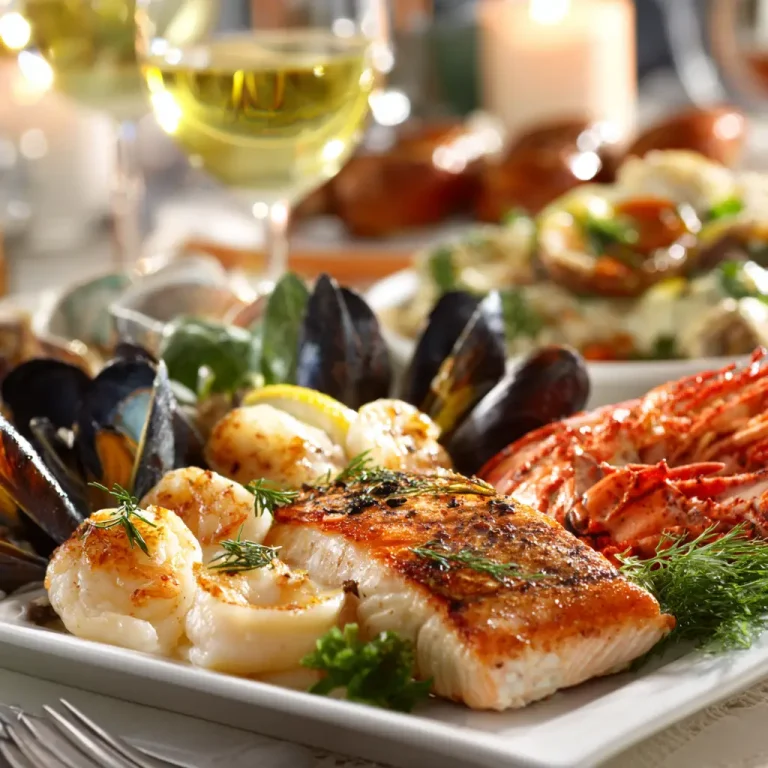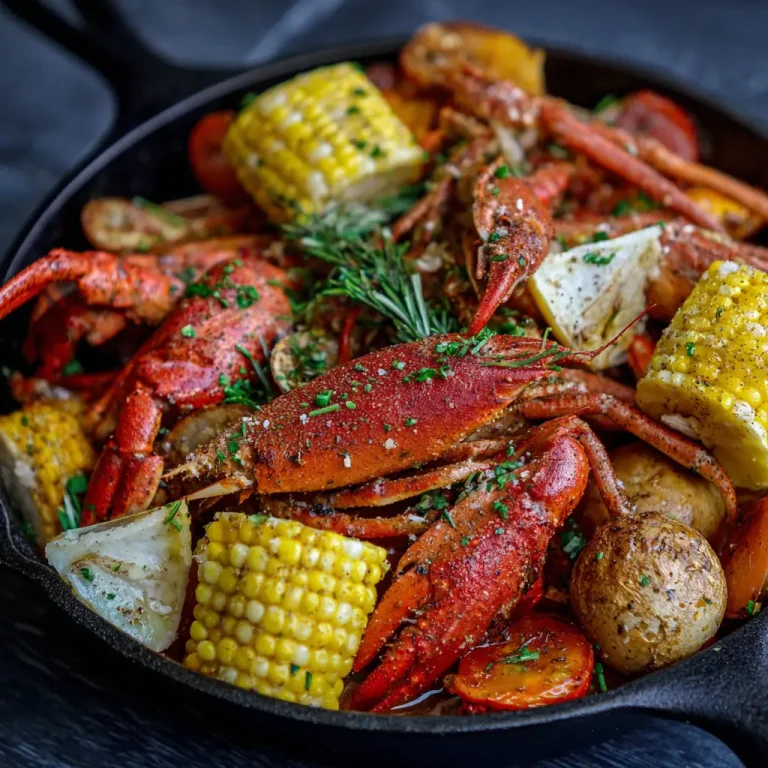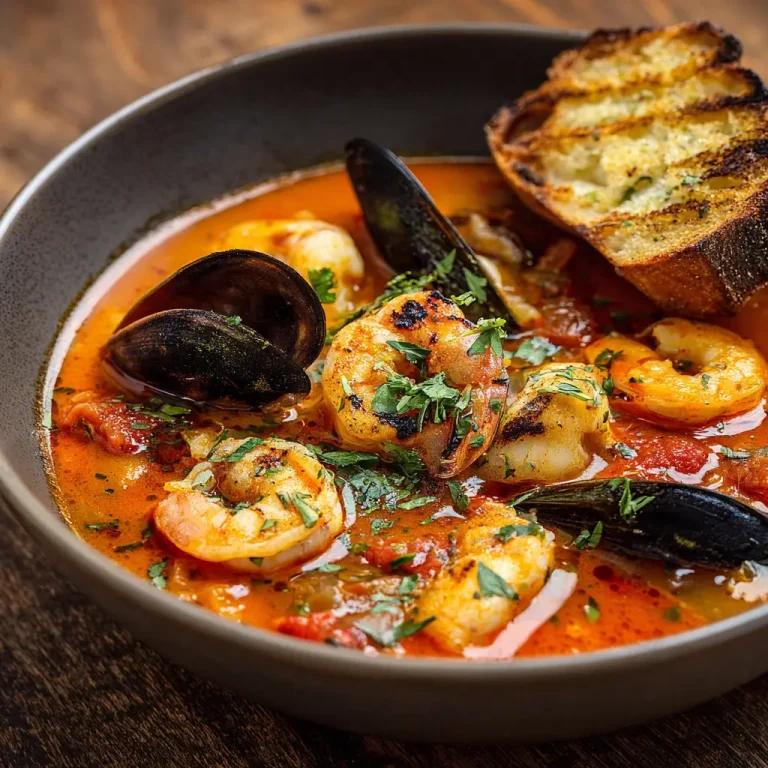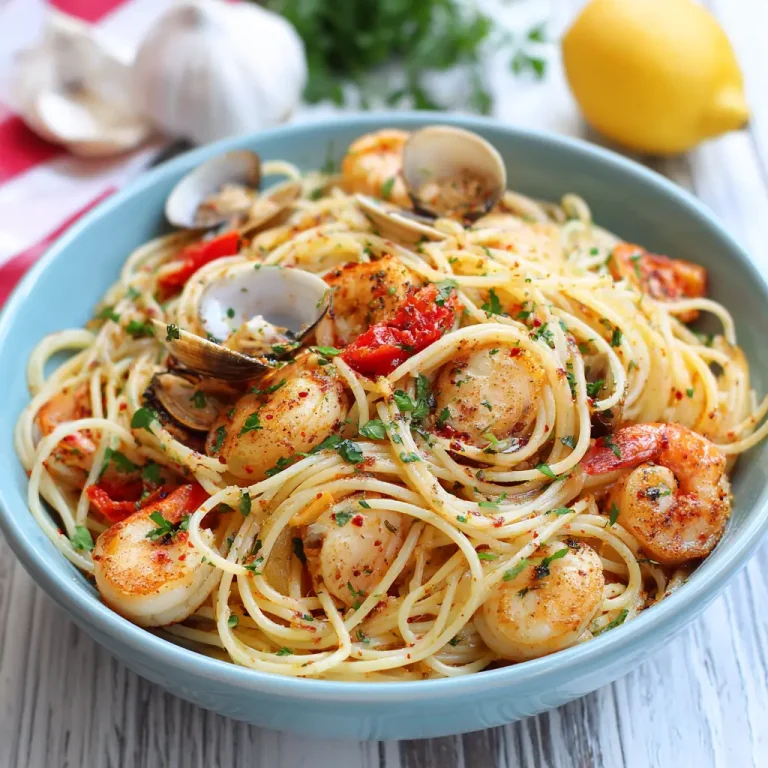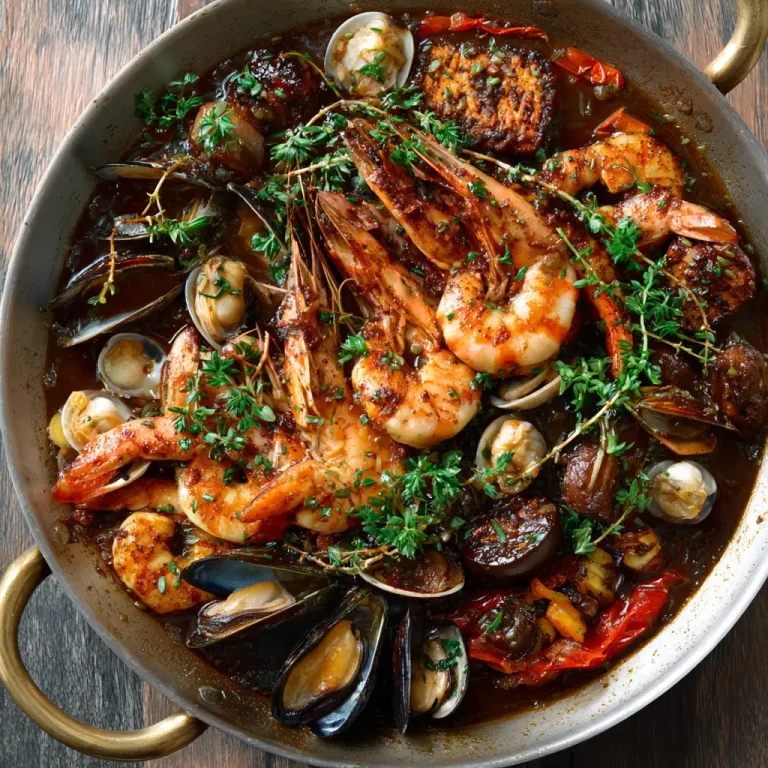Seafood Soup Recipes: Easy and Delicious Homemade Seafood Soup Ideas
Introduction
Seafood soup offers a comforting and flavorful way to enjoy the bounty of the ocean in a single bowl. Whether you crave the briny taste of shrimp, the tender flakiness of fish, or the sweet essence of crab, seafood soup brings these elements together with herbs, spices, and vegetables that elevate every spoonful. The beauty of seafood soup lies not only in its rich flavors but also in its versatility. It can be light and brothy or creamy and hearty depending on your preference. It serves as a perfect starter or a satisfying main course, especially on chilly evenings or special occasions. Making seafood soup at home allows you to control the freshness of the ingredients, the seasoning levels, and even the soup’s thickness. It can also be a wonderful way to introduce a variety of seafood into your diet, blending different textures and tastes harmoniously. Whether you follow a traditional recipe or experiment with your own blend of spices and ingredients, seafood soup is a culinary experience worth savoring.

Ingredients Needed
Below is a detailed list of ingredients required to prepare a classic seafood soup along with their approximate calorie counts. This will help you keep track of the nutritional value while cooking.
| Ingredient | Quantity | Calories (Approx.) |
|---|---|---|
| Shrimp (peeled) | 200 grams | 190 |
| White fish fillets | 200 grams | 180 |
| Crab meat | 150 grams | 110 |
| Clams | 100 grams | 140 |
| Onion (chopped) | 1 medium | 45 |
| Garlic (minced) | 3 cloves | 15 |
| Celery (chopped) | 2 stalks | 20 |
| Carrots (diced) | 2 medium | 50 |
| Tomatoes (chopped) | 3 medium | 70 |
| Olive oil | 2 tablespoons | 240 |
| Fish stock | 4 cups | 60 |
| White wine | 1/2 cup | 60 |
| Fresh parsley | 2 tablespoons | 4 |
| Bay leaf | 1 leaf | 1 |
| Salt | To taste | 0 |
| Black pepper | To taste | 0 |
| Red chili flakes | Optional, 1 tsp | 6 |
The combination of seafood with aromatic vegetables and herbs creates a flavorful broth that is both nutritious and satisfying.
Step-by-Step Cooking Instructions
- Begin by heating olive oil in a large pot over medium heat. Add the chopped onion, celery, and carrots. Sauté these vegetables gently until they become soft and translucent, approximately 5 to 7 minutes.
- Incorporate the minced garlic and cook for an additional minute, ensuring it does not brown as it can become bitter.
- Add the chopped tomatoes and cook until they break down, about 5 minutes. This will help develop the base of your soup.Continue your cooking journey with Seafood Stew_ right after this.
- Pour in the white wine and allow it to simmer for a few minutes, letting the alcohol evaporate and the flavors meld.
- Add the fish stock and bay leaf to the pot. Bring the mixture to a gentle boil, then reduce the heat to let it simmer for 10 minutes. This step enhances the depth of flavor in the broth.
- Carefully add the white fish fillets, shrimp, crab meat, and clams to the simmering broth. Cook for 5 to 7 minutes, or until the seafood is cooked through and the clams open. Discard any clams that remain closed.
- Season the soup with salt, black pepper, and red chili flakes if you like a touch of heat.
- Remove the bay leaf and stir in fresh parsley for a burst of freshness before serving.
Seafood soup is best enjoyed hot, straight from the pot, allowing the flavors to shine with each bite.
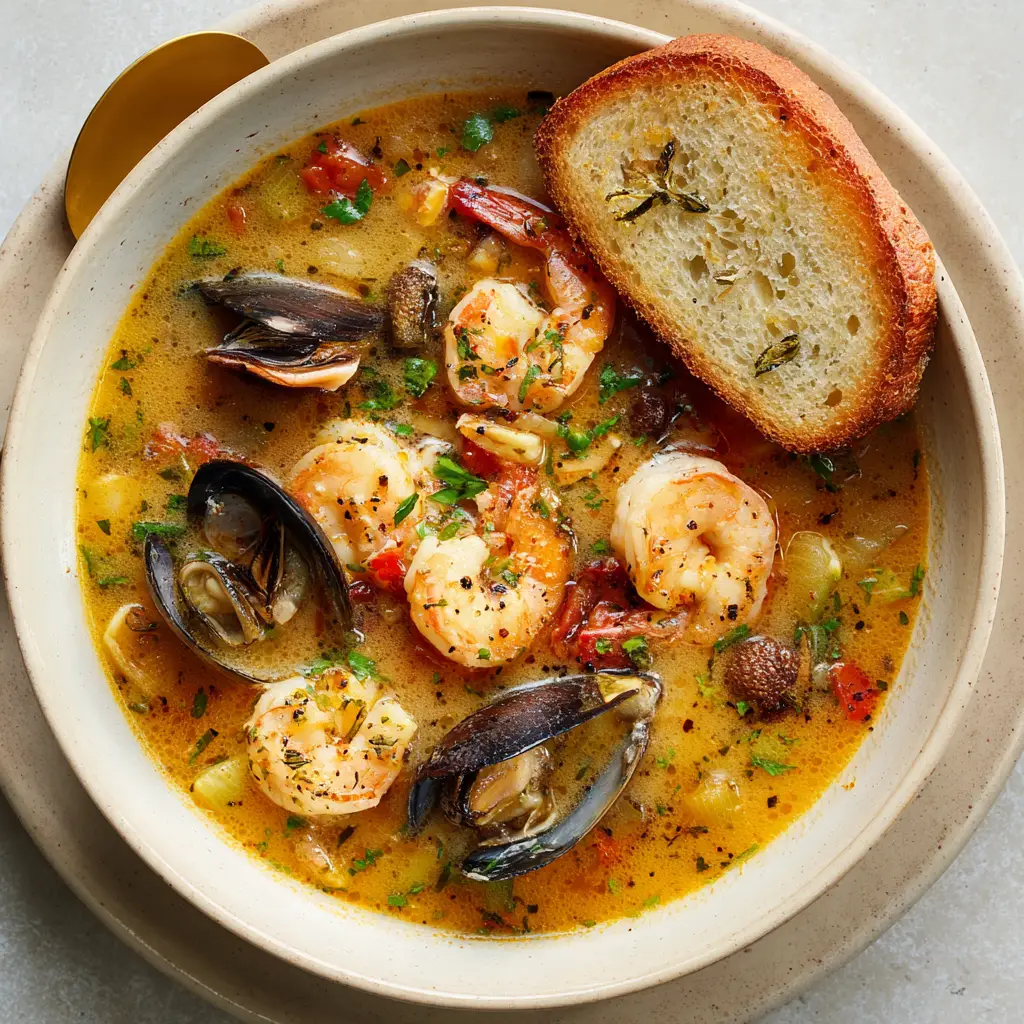
Tips for Customizing the Recipe
Adding your personal touch to seafood soup can make it even more special. For a creamier version, stir in a splash of coconut milk or cream near the end of cooking. You might also want to try different seafood varieties such as scallops, mussels, or lobster to vary the taste and texture. If you prefer a spicier soup, increase the amount of chili flakes or add fresh chopped jalapeños. For those seeking a more robust flavor, consider roasting the vegetables before adding them to the pot or incorporating smoked paprika for a subtle smoky note. Using homemade fish stock instead of store-bought can significantly enhance the soup’s depth. Finally, experiment with fresh herbs like dill, basil, or thyme to suit your palate and add complexity.
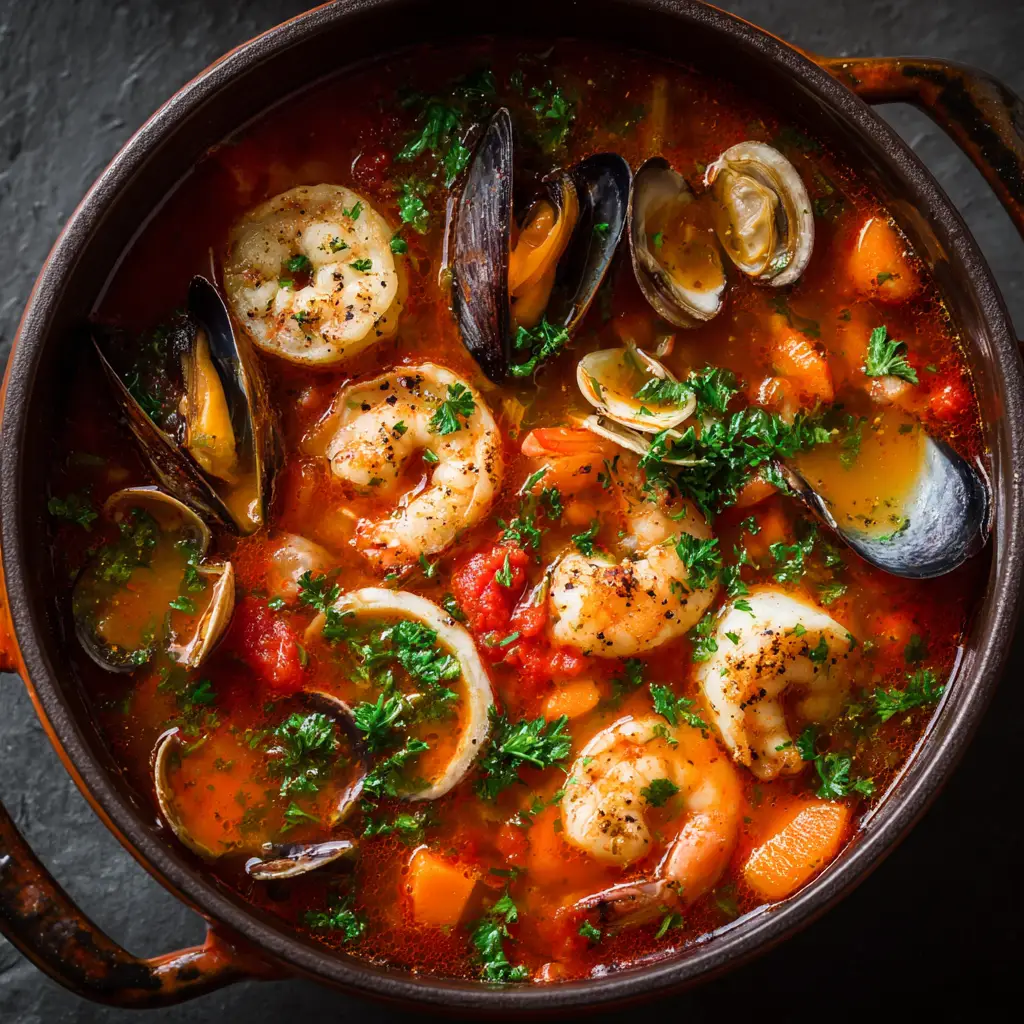
Nutritional Information
Seafood soup is not only delicious but also packed with nutrients. The combination of seafood provides a rich source of high-quality protein, omega-3 fatty acids, and essential minerals like zinc and selenium. Vegetables such as carrots, celery, and tomatoes contribute vitamins A, C, and antioxidants, supporting immune health. Olive oil adds heart-healthy monounsaturated fats, while garlic offers anti-inflammatory benefits. Depending on the exact ingredients and portion sizes, a serving of seafood soup typically contains between 250 and 350 calories, making it a light yet nourishing meal. This balance of protein, healthy fats, and vegetables makes seafood soup an excellent choice for those looking to maintain a wholesome diet without sacrificing flavor.
Serving Suggestions
Seafood soup pairs wonderfully with crusty bread or garlic toast to soak up the flavorful broth. A side salad with a tangy vinaigrette complements the richness of the soup nicely. For a heartier meal, serve it alongside steamed rice or buttery mashed potatoes. Garnishing with fresh herbs like parsley or chives adds color and freshness. A squeeze of lemon on top can brighten the flavors and add a hint of acidity. For special occasions, present the soup in elegant bowls with a drizzle of high-quality olive oil or a sprinkle of freshly grated Parmesan cheese. A chilled glass of white wine or a light beer also pairs well, enhancing the overall dining experience.
Seafood Soup Recipes: Easy and Delicious Homemade Seafood Soup Ideas
Course: Blog4
servings15
minutes30
minutes300
kcalIngredients
200g shrimp (peeled and deveined)
200g white fish fillets (cut into chunks)
150g crab meat (fresh or canned)
100g clams (cleaned)
1 medium onion (chopped)
3 garlic cloves (minced)
2 stalks celery (chopped)
2 medium carrots (diced)
3 ripe tomatoes (chopped)
Directions
- Sauté Vegetables:
- Heat olive oil in a large soup pot over medium heat. Add chopped onion, celery, and carrots. Cook until softened, about 5–7 minutes.
- Add Garlic and Tomatoes:
- Stir in the garlic and cook for 1 minute. Add chopped tomatoes and simmer until they start to break down, around 5 minutes.
- Deglaze with Wine:
- Pour in the white wine and let it simmer for 2–3 minutes to cook off the alcohol.
- Add Broth and Herbs:
- Add the fish stock and bay leaf. Bring to a gentle boil, then reduce heat and simmer for 10 minutes to let the flavors develop.
Recipe Video
Notes
- You can customize this soup by adding other seafood like mussels or scallops. For a creamy variation, stir in a splash of coconut milk or heavy cream at the end. Always use fresh seafood when possible for the best flavor.
FAQs
Can I use frozen seafood for this recipe?
Yes, frozen seafood works well. Just thaw it completely and pat dry before adding it to the soup to avoid excess water.
How long can I store leftover seafood soup?
Store leftovers in an airtight container in the refrigerator for up to 2 days. Reheat gently to avoid overcooking the seafood.
Is it possible to make this soup vegetarian?
You can substitute seafood with mushrooms, tofu, or plant-based seafood alternatives and use vegetable stock instead of fish stock.
Can I prepare seafood soup in a slow cooker?
Absolutely. Sauté the vegetables first, then transfer everything to the slow cooker. Add seafood towards the end of cooking to prevent overcooking.
What type of fish is best for seafood soup?
Firm white fish like cod, halibut, or haddock hold up well in soup without falling apart.
Conclusion
Seafood soup offers a delightful combination of rich flavors and wholesome ingredients that warm the soul and nourish the body. It invites creativity and flexibility, making it perfect for any occasion or mood. With fresh seafood, vibrant vegetables, and aromatic herbs, it provides a balanced and satisfying meal. Crafting seafood soup at home not only allows control over ingredients but also creates a rewarding cooking experience.


